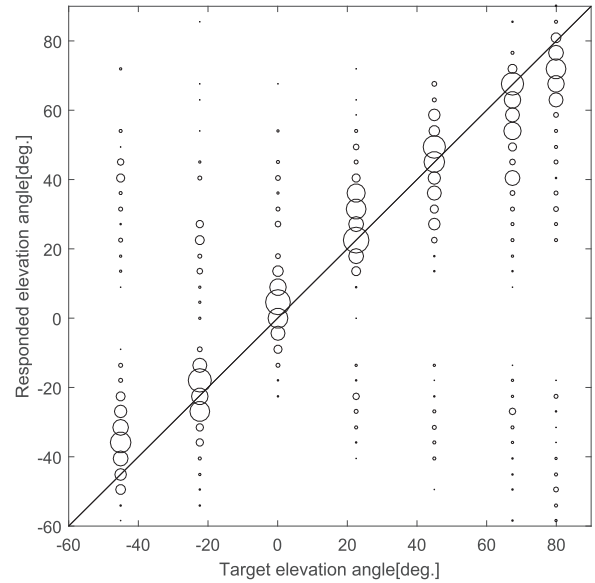Elevation perception plays an important role in the binaural reproduction. The perceptual cues for azimuth are interaural time difference and interaural level difference, while the perceptual cues for elevation are mainly related to spectral cues. The influence of spectral cues on elevation perception has gained increased interests over the past decades.
The analysis of Head Related Transfer Functions (HRTFs) showed that the frequency ranges from 4 kHz to 16 kHz is essential for elevation perception, and the peaks and notches in the spectrum are also crucial. However, most studies only qualitatively discussed the influence of spectral cues on elevation perception, lacking quantitative description of the relationship between elevation perception and spectral cues.
To solve this problem, researchers from the Institute of Acoustics of the Chinese Academy of Sciences (IACAS) proposed a parametric model and approach for elevation control in binaural reproduction in which the spectral peaks and notches were selected as characteristics.
The study has been published in the Applied Acoustics in May 2019.
In the proposed method, the elevation control rules were first learned from the spectral features parameterized by a set of digital filters of HRTFs with different elevations. According to these rules, the spectral features could be modified and further used for resynthesizing the direct component of different Binaural Room Impulse Responses (BRIRs), with which the elevated entire BRIRs could be generated by combining the late components of original BRIRs. The block diagram of the proposed elevation control approach was plotted in Figure 1.

Figure 1. Block diagram of the proposed method (Image by IACAS)
The sound localization results averaged across all subjects, stimuli and azimuth directions were plotted in Figure 2. The diameter of each circle was proportional to the number of responses. The ordinate of the figure was the responded elevation, and the abscissa was the ‘‘real” elevation of stimuli. Figure 2 showed that the responses were distributed along a diagonal line, which indicated the responded directions were closely consistent with the ‘‘real” ones.

Figure 2. Localization results of the listening test (Image by IACAS)
It is noted that BRIRs including both HRTFs and reverberation in real environments are usually adopted to improve the naturalness of sound. Although BRIRs can offer immersive experience, due to the limitation of elevated loudspeakers, BRIRs are usually measured at azimuth directions without sufficient (if have) elevations. The proposed method could solve the problems mentioned above and could be further used in virtual reality applications to give users immersive experiences.
The research was supported by the National Key Research and Development Program (No. 2017YFB1002803), the National Natural Science Foundation of China (Nos. 11722437, 11674352).
Reference:
YAO Dingding, LI Junfeng, XIA Risheng. A parametric elevation control approach for binaural reproduction. Applied Acoustics, 2019, 148: 360-365. DOI: 10.1016/j.apacoust.2018.12.036
Contact:
ZHOU Wenjia
Institute of Acoustics, Chinese Academy of Sciences, 100190 Beijing, China
E-mail: media@mail.ioa.ac.cn


